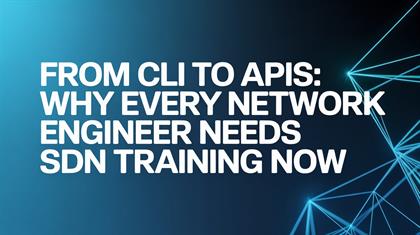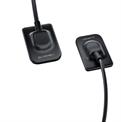
Next-Level Wireless Security: Zero Trust and Identity-Based Access in Cisco Networks
November 06, 2025
In the field of CCIE Wireless Training, one topic that continues to grow in importance is wireless security. As wireless networks become the primary way people and devices connect, the question is no longer how fast your Wi-Fi is — but how secure it is.
From corporate laptops to IoT sensors and guest devices, the wireless edge has become the front line of enterprise security. Old security models that once worked, such as passwords and shared keys, can no longer protect modern, dynamic environments. This shift has led to the rise of Zero Trust and Identity-Based Access, two essential approaches that redefine how Cisco networks manage and protect wireless connections.
The Evolution of Wireless Security
In the early days of enterprise Wi-Fi, security was simple — you connected with a password, and that was it. As networks expanded, organizations began using enterprise authentication methods like 802.1X, RADIUS, and WPA2-Enterprise.
While these methods added protection, they still assumed that once a user was “inside” the network, they could be trusted. This approach worked when all employees worked on-site using company-owned devices. But that world no longer exists.
Today’s work environment includes remote employees, contractors, cloud apps, personal smartphones, and IoT devices. Each connection introduces potential vulnerabilities. Attackers only need one weak point to gain access. That’s why the modern mindset has shifted from “trust but verify” to “never trust, always verify.” This is the foundation of Zero Trust.
What Zero Trust Really Means
Zero Trust isn’t a product you buy — it’s a security framework that changes how your network operates. Instead of assuming that users or devices inside the network are safe, Zero Trust continuously checks identity, context, and behavior.
It asks key questions before allowing access:
- Who is trying to connect?
- What device are they using?
- Where are they connecting from?
- What are they trying to access?
Only when the network can verify and approve these answers does it allow the connection. If something looks suspicious — for example, an employee trying to log in from a new country or an unknown device — access can be limited or blocked.
This model helps reduce the risk of insider threats, stolen credentials, and lateral movement of attacks across the network.
Cisco’s Approach to Zero Trust in Wireless Networks
Cisco has integrated Zero Trust deeply into its wireless architecture. It’s not just about encryption; it’s about identity, segmentation, and continuous validation.
Here are a few key Cisco technologies that bring Zero Trust to life:
- Cisco Identity Services Engine (ISE): This is the policy engine that verifies identities and applies access rules. It checks who the user is and what device they’re using before granting permission.
- Cisco DNA Center: It provides centralized management, analytics, and assurance. It can automatically detect unusual patterns and trigger responses.
- Secure Group Tags (SGTs): Instead of assigning access based on VLANs or IP addresses, Cisco uses tags to identify users and apply policies dynamically across the network.
- Software-Defined Access (SD-Access): It enables segmentation and automation, creating secure boundaries that limit what each user or device can do once connected.
Together, these solutions create a flexible, scalable, and secure environment for wireless networks — an essential concept for anyone pursuing ccie wireless expertise.
Identity-Based Access: Security with Precision
Identity-Based Access is the practical side of Zero Trust. It ensures that network permissions are given based on who is connecting and what they are allowed to do.
For example:
- A company engineer might get full access to internal systems.
- A guest user could only access the internet.
- An IoT device may only connect to a specific controller or service.
This fine-grained control prevents unauthorized users from moving freely within the network. It also simplifies operations because policies follow the user — not the physical connection.
If an employee moves to another department or location, their permissions automatically adapt. This level of flexibility and security is what makes identity-based access so powerful.
Why It Matters for Wireless Professionals
For engineers undergoing CCIE Wireless Training, understanding Zero Trust and identity-based design is no longer optional — it’s a requirement. Cisco’s modern enterprise solutions expect engineers to combine strong technical skills with security awareness.
A CCIE Wireless professional must know how to:
- Integrate wireless controllers with Cisco ISE
- Configure group-based policies and secure segmentation
- Use Cisco DNA Center for analytics and assurance
- Troubleshoot identity and authentication issues
Mastering these areas not only helps in achieving the certification but also prepares engineers to design and maintain secure wireless environments in real-world networks.
Looking Ahead: The Future of Secure Wireless
As Wi-Fi 6 and Wi-Fi 7 continue to shape enterprise connectivity, the role of Zero Trust will only grow. Faster networks mean more devices and more potential entry points for attacks.
Future wireless networks will rely heavily on automation, artificial intelligence, and continuous monitoring to detect and respond to threats. Engineers who understand the balance between performance and security will be in the highest demand.
Conclusion
Zero Trust and Identity-Based Access are not just trends — they are the foundation of modern network defense. By verifying every user and every device, these models protect wireless networks from evolving threats and misuse.
For anyone aiming to earn the CCIE Enterprise Wireless Certification, mastering these principles will be key to designing secure, intelligent, and trustworthy wireless environments.
The next generation of wireless isn’t only about speed — it’s about security without compromise.
Leave a Reply
You Might Like Also

Mastering Enterprise WLAN Design for the CCNP Wireless Exam












